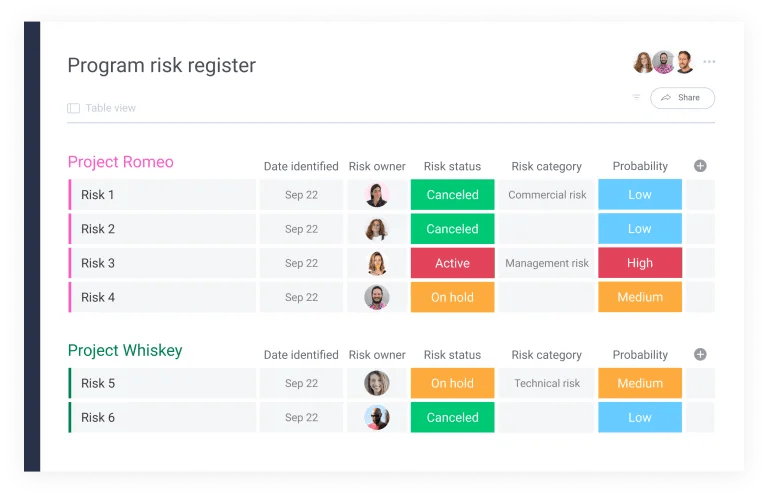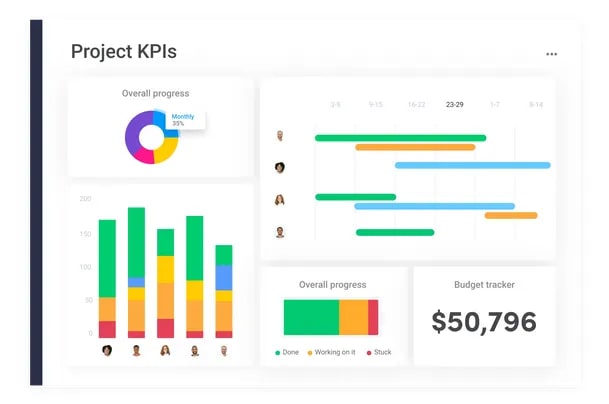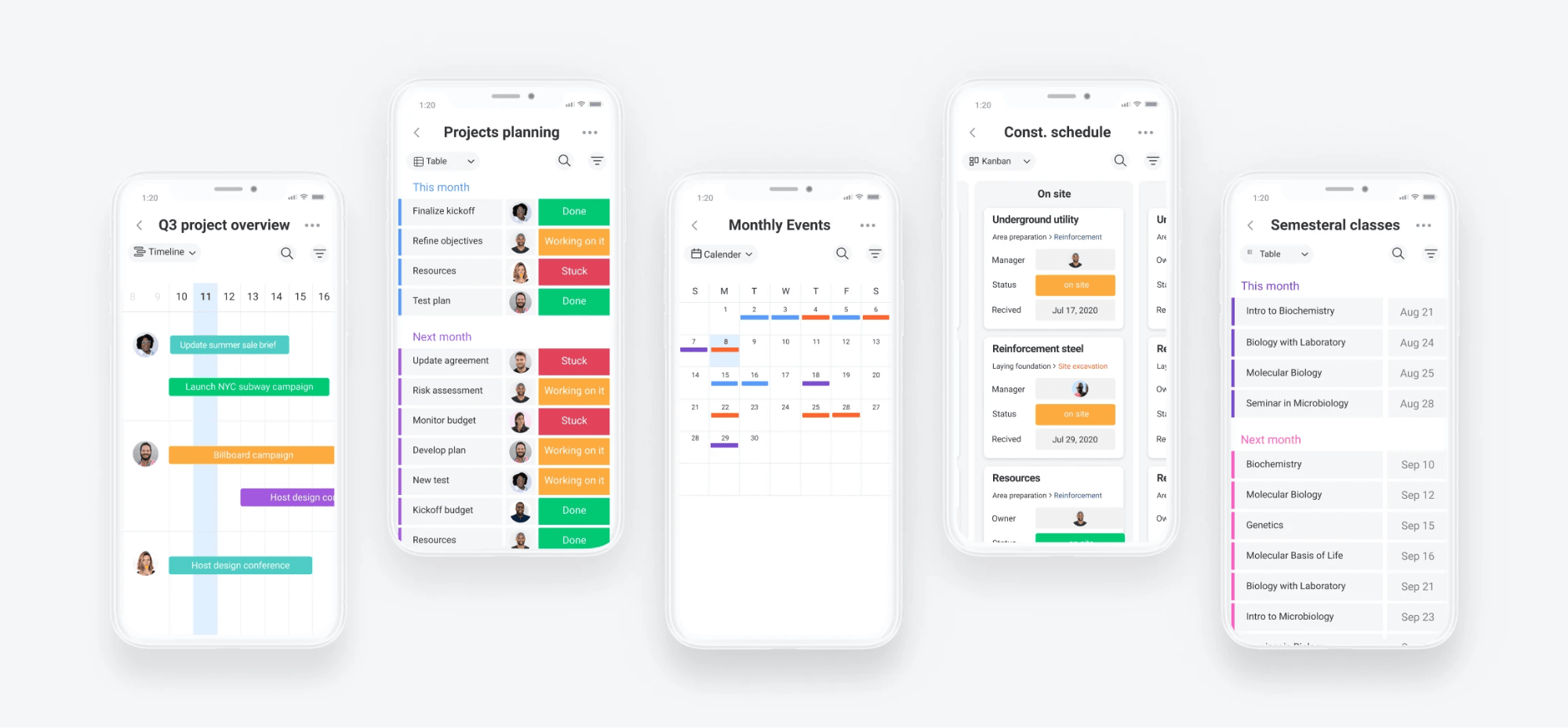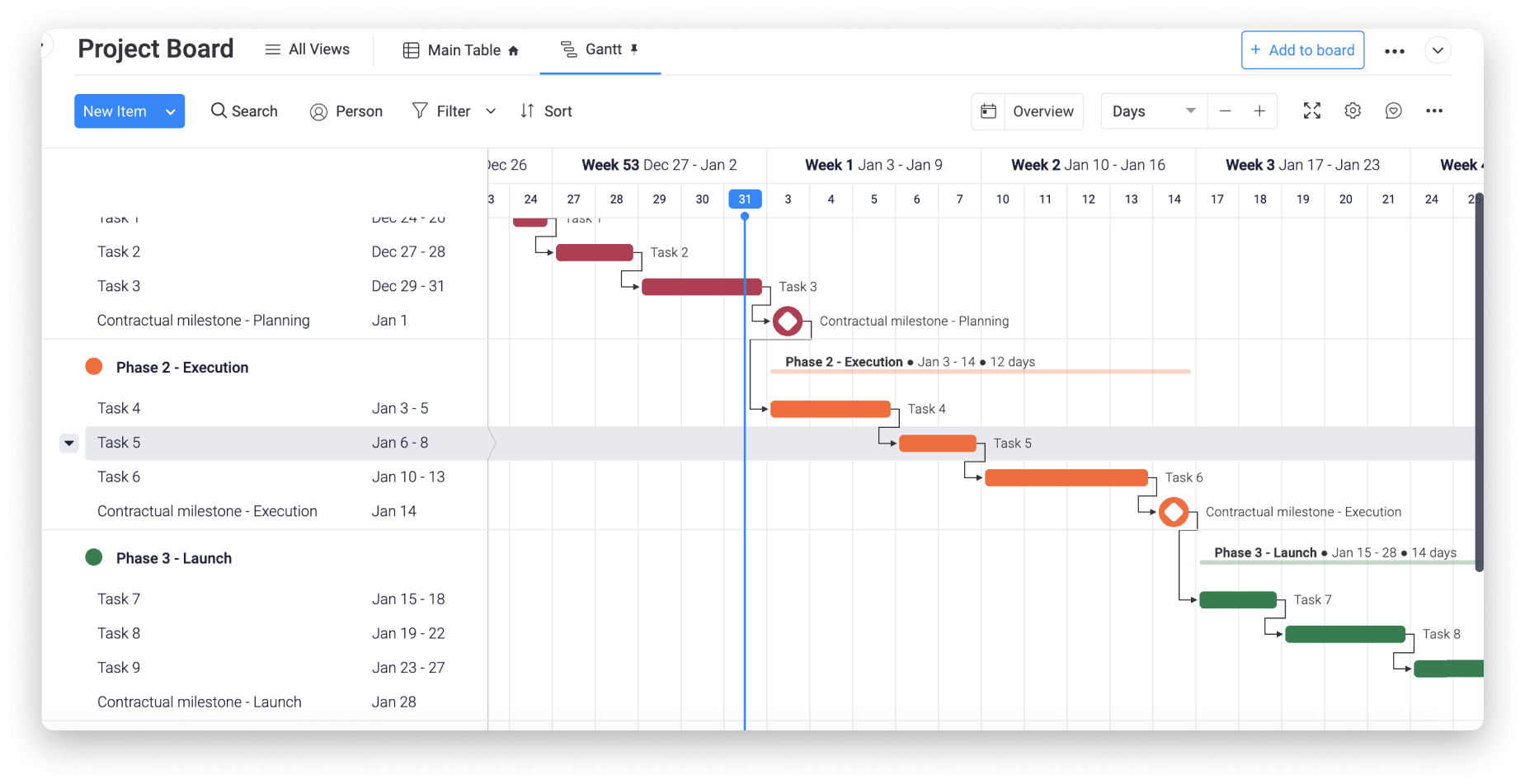What comes to mind when you hear “project management software”?
You probably think about large corporations with endless resources that need complex software to manage dozens or 100s of projects and 1000s of people.
While you’re not wrong, the use of project management software extends far beyond the Fortune 500 companies that come to mind.
According to the Small Business Administration (SBA), there are 30 million small businesses in America, and they employ over 60 million people.
With over 99% of American businesses falling under the small business definition, it’s safe to say there’s a massive need for project management software outside of big business.
Small businesses run plenty of projects and often have unique constraints that require creative solutions. While many small businesses turn to free solutions like Google Docs and spreadsheets, they’re far from ideal and come with many hidden costs like manual entry, limited scalability, lack of mobility, and more.
It’s safe to say you probably need project management software, but searching for one that’s “just right” is an exhausting process.
If only someone would come along and tell you what to look for and how to find one that best suits your unique small business needs. In this article, we’ll do just that and teach you how to build your own custom project management software with monday.com.
What is project management software?
Project management software makes it easier to deliver project outcomes.
It ensures your project manager has full visibility into the day-to-day happenings and has all the insights they need to make critical decisions at a moment’s notice.
The right project management solution makes it easy to plan your project and define a clear schedule from beginning to end.

It helps identify, document, and assign potential risks, so there are fewer surprises and less chance for the project to veer off course.
It’s flexible enough to adapt to change and includes all the features necessary to keep the team in alignment at all times. Most importantly, it’s full of task management features that maintain a constant pulse on all the small things people do each day that add up to something big.
Rock-solid project management software isn’t cheap, but it will save you money, prevent headaches, and make your team more efficient.
Why your small business needs project management software
Project management software is far from a luxury only big business can afford. Small businesses are the backbone of our economy and equally require real-time insights, automation, and enhanced workflow management to get the job done.
Often small businesses are working with tighter budgets, fewer human resources, and limited market oversight. To put it plainly, they need to do more with less, and finding the right project management tool is the best way to do that.
Finding one that’s up to the task is a challenge, but before we get into what to look for, let’s go over the clear benefits that project management software brings to the table.
Promote risk management
It’s hard enough for multinational companies with large compliance and legal departments to identify risks. For small businesses where everyone’s wearing several hats, it can feel impossible.
That’s why deploying the right project management software is so important. It extends the reach of a small team that’s managing projects on top of their daily workload.
Take monday.com’s Risk Register Template as an example.

With it, your team can brainstorm potential risk items that may sabotage, slow down, or fully derail your project. You can assign a probability and a current status, so everyone’s on the same page.
You can also identify a risk owner — who’s not only responsible for ensuring there’s an eye on the problem — but who’s ready at a moment’s notice to deploy a risk action plan.
Create a culture of transparency
You might have heard the saying “culture eats strategy for breakfast.” It resonates because culture guides our everyday actions more than the company’s overall strategy.
Employees work as hard as their colleagues do. The right leaders ensure corners aren’t cut and that everyone has the tools, knowledge, and support they need to succeed.
The way people interact with each other matters.
The culture of your small business may feel like an afterthought at times, but it’s arguably defining whether your projects — and, more importantly, your organization — will be successful or not.
The right project management software lifts the curtain — so to speak — and provides the entire team with oversight of the project. It acts as a collaboration tool that brings the team together no matter where they’re located.
It gives the project manager insights into how the team’s performing and provides the transparency needed to prevent miscommunication, drive action, and make the team feel inspired to do their best work.
Facilitate order and structure
Project management software makes it easy to manage multiple projects at once and ensure the team is set up for success. It accomplishes that by providing valuable insights that would be cumbersome for a small business owner or project manager to do manually.
While accountability isn’t something you can buy, the right app or software can help you build it into your project’s workflow.Threading accountability into a project can be as easy as assigning ownership to a task. With the right software, everyone has full visibility into key metrics and who’s working on what. With enhanced visibility over multiple projects, the team can make better decisions, prevent scope creep, and waste less time providing status updates.
Enhance reporting capabilities
While small businesses don’t always have a board of directors to report to, they do have stakeholders relying on them. The company owner, strategic partners, and the customer expect certain outcomes in a timely manner.
To show progress on achieving project milestones, a project manager typically generates reports full of key performance indicators (KPIs). Sure, those reports can come in Excel or Google Docs, but that takes manual entry.

The right project management software will not only provide workflow management but in-depth reporting too. No fiddling with spreadsheets or hours of manual entry required. Just real-time insights full of clean visuals they can send off at a moment’s notice.
Unite everyone to a common cause
Poorly defined goals, objectives, and tasks leave everyone feeling confused or directionless. It’s the kryptonite to a successful project and will keep your team feeling disconnected and unmotivated.
Proper project planning and implementing management software is the antidote. It provides a central hub for setting expectations, assigning ownership, and providing a channel for your team to ask questions, get feedback, and deliver their work.
Project management software is especially useful for uniting remote teams. It provides a clear communication channel and framework for the team to get things done despite not sitting beside each other in some stuffy cubicle.
In a noisy world with plenty of demands for our time, project management software provides clarity. The ability to see the intangible work you’re doing become tangible — and know your colleagues are working hard alongside you — is priceless.
What to look for in project management software for small business
There’s no shortage of project management software professing to be the “best in the market,” which honestly makes looking for one a bit stressful.
Surely, they can’t all be the best, right?
It’s less of finding the “best” and more of finding the best for your specific needs.
Finding software that’s up to the task boils down to knowing yourself. Small business owners benefit greatly from doing an in-depth analysis of their needs and budgetary constraints. Only then can you dive headfirst into comparing and contrasting features and costs.
Here are a few things to consider on your journey:
Scalability
Cost-effectiveness is an essential value for small business software, but it’s not the only factor. An often overlooked facet of deciding on software is its scalability.
Few small businesses want to stay small, so choosing software that will grow with you is highly advisable.
Buying project management software follows the same rules as buying a home. You don’t buy the one that fits your budget and your needs today. Instead, buy one a bit larger than you need and anticipate your needs in the future.
Moving is a pain, and the same is often true for switching software.
Do future you a favor and buy your forever software now.
Some signs that the software you’re considering will scale with you is whether they offer a tiered pay structure with additional features, control, and enhancements as you move up.
Seeing an enterprise plan available or unlimited users is a good sign that they’ve built in the structure to accommodate massive growth.
Simplicity
As a small business owner, you’re probably plenty busy and don’t have the time to learn complex software and turn around to teach it to everyone else. You want something intuitive. Something you can get value out of on day one.
Ideally, the software isn’t so complex or overly feature-rich that your team struggles through onboarding. Here’s where having that “must-have” feature list comes in handy.
If you have remote teams working alongside you, it’s also important to make sure it fills their needs as well. Finally, ask yourself if the user interface (UI) is easy to navigate, quick to load, and easy on the eyes. If the answer is no — or maybe — then it’s probably best to keep looking.
Mobility
Very few small business owners or project managers are sitting behind a desk all day.
They’re on the go!
They’re picking up supplies, running errands, and likely moving between offices non-stop to ensure everything is getting done per their standards.

We’d wager you’re not much different, and as a result, you need software that looks and feels just as good on your mobile device as they do on your desktop computer.
The project management app you choose should have a mobile app that’s just as feature-rich and easy to use. Ideally, it’d have plenty of options for notifications, so even when you’re out of the office, you’re getting the timely updates you need.
Integrations
Software can’t be all things to all people, and anyone who tells you it can shouldn’t be trusted.
The best software developers know this and build in the ability to integrate and play nicely with other software. Some popular integrations include:
- Email applications to convert emails into tasks and automate outgoing status updates
- Chat and video conferencing applications to keep your team connected anytime, anywhere
- External storage that provides all the files you need at a moment’s notice
- Customer relationship management (CRM) software allows your prospect and customer data to be easily accessible in one location
- Marketing and social media applications, so all your campaign data and corresponding insights are easily reportable
These integrations are convenient if you’re managing multiple projects. Each project likely has unique needs and requires a management tool that can easily tap into different software types.
Collaboration
A project’s success or failure greatly depends on your team’s ability to communicate and collaborate. At a minimum, your team should feel comfortable navigating the software and using its features to stay in touch and share files.
The right management tool will keep everyone on the same page by providing a system to check on a task’s status without interrupting the person. That means fewer emails and meetings and more time focusing on what you do best.

Chatting in real-time makes it easy to hold a conversation without leaving the comfort of your desk.
Also, tagging people within various tasks keeps discussions relevant and organized, so anyone jumping into a task or project immediately gets a sense of what’s going well or where they can help.
Finally, any sort of resource management features that share bandwidth across the team can be an efficient way to spread the workload and prevent burnout.
Automation
It’s the 21st century, so you probably understand that automation comes with a myriad of benefits ranging from increasing productivity and higher production rates to more efficient use of materials and fewer mistakes.
If you’re managing complex projects, then automation is invaluable to cutting costs, keeping the project on schedule, and keeping your teams focused on what matters most.
Automation can support your team with recurring tasks, so they’re not bogged down in admin work. It can also automatically notify the project manager, stakeholders, or other team members when a task status changes or when specific milestones are complete.
What unique project management tools should your software include?
While all projects are unique, there are typically many similarities ranging from the process to the tools you use.
The project management process includes initiation, planning, execution, monitoring and controlling, and closing. The project management software you choose should have features, tools, and templates that accommodate those key phases.
As for team collaboration and picking the right project management tool, you need to ensure you have data visualization tools like Gantt charts and Kanban boards.
A Gantt chart is a resource management tool that brings together tasks and resources along a timeline that keeps a project on schedule.

On the other hand, a Kanban board is more of a system or methodology used for assigning and completing work. Each has its own unique uses and provides a visual representation of the often intangible work the team is doing.
Some other tools include workload management, which provides a clear overview of how all the project work is distributed across the team. At its core, the workload view relies on measuring each task’s effort, assigning said tasks to team members, and picking a deadline or due date. With that data, you can easily see who’s plate is full and who can take on a bit more.
How monday.com can solve all your project management needs
Strictly speaking, monday.com isn’t project management software for small business.
It’s a work operating system, also known as a Work OS, that’s fully loaded with all the features you’d need to create a customizable project management system for your small business.
That’s right, customized.
Sure, we provide hundreds of useful templates that make launching any project feel easy, but how you customize those is entirely up to you.
The features monday.com include:
- 30+ customizable column types that provide complete freedom to curate your perfect workflow on your terms
- 8+ data visualizations that give the data greater depth, meaning, and flexibility, so everyone on your project team has a visual of what matters most
- Unlimited automation recipes that bust through time-consuming admin tasks and greatly reduce costly human errors
- 40+ integrations — including Zapier — so you’re always connected to the files and data your team needs and can customize your own integrations where needed
- Extensive collaboration tools like chat, tagging, and integrated video conferencing that provide your team the real-time updates they need to get their work done
When it comes to business management, monday.com provides the platform you need to streamline your project and fuels collaboration for both a small team and a large one. You also get the Kanban boards, Gantt charts, and Workload views we talked about in previous sections.
Getting started
Project management software for small business isn’t an oxymoron.
Small businesses aren’t stuck in the stone age with their Excel spreadsheets. They’re launching complex projects that require creative solutions every single day.
They need project management software that’s affordable, scalable, and will help them do more with less.
By now, you can see, there’s a lot that goes into picking the right project tracking software for your small business. And we humbly believe monday.com is up to the task.
Why not get started with us now? We promise you’ll see the monday.com difference right away.
